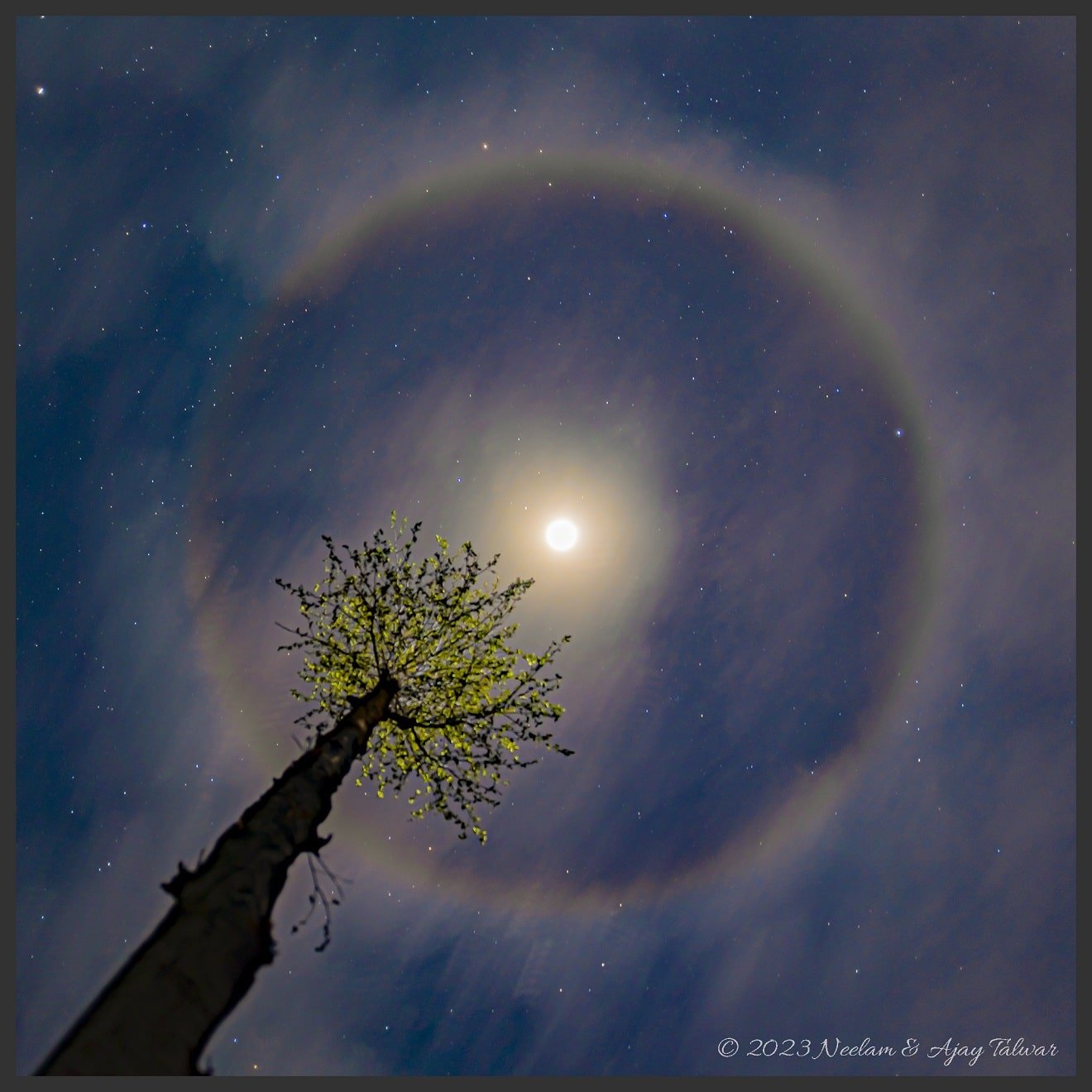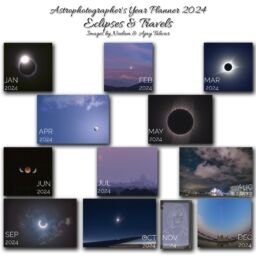Sitara Himalaya is an opulent brand new home-stay in Himachal Pradesh. The opening of the home-stay was on the date of Baisakhi, 2023. The home-stay is located at a small Himalayan village of Palchan. Travel eleven kilometres northwards from Manali, on the Manali-Leh highway and you will reach this hamlet, sufficiently removed from the lights of Manali. A wonderful location to view the night sky and do your own astrophotography.
The home-stay has its own 12-inch Aperture telescope to observe the heavens. A lovely treat for visual astronomers. You can visit their website -www.sitarahimalaya.com The Home-stay has a grassy lawn close by for a quick observation. You can also step just outside the spa complex, there is the village temple site which has sufficient flat area and 360° clear view, suitable for spending an entire night. In the valley you can see the Beas tributary, snow-capped mountains on both sides and the clear night sky above.

Here is an immersive 360° x 180° panorama that we made from the location of the village temple flat, just outside Sitara Himalaya. In this ‘Little Planet’ panorama you can see the home-stay main building towards the bottom of the image. Slightly to the left is the ‘Sky Room’ which has a clear glass ceiling. A place to relax with the full view of the night sky. Towards the left of the image you can see the spa complex. The white mountain ranges of Dhauladhar and Pir Panjal shine beautifully. This image was made on the night of 29th March, at about 4am. The summer Milky Way was arching up from the eastern and southern directions.

Another image made from the Sitara Himalaya. This was made on the 30th March evening. Looking above the Dhauladhar Mountains, we could see Venus shining brightly in the evening twilight. As the sky darkened stars of Aries, Taurus constellations became brighter steadily. You can see the Krittika cluster a.k.a. Seven Sisters above Venus.

On the same evening we also saw a bright Moon Halo. The Moon Halo is an atmospheric phenomena. It is created when light is refracted, reflected, and dispersed through ice crystals suspended in cirrus or cirrostratus clouds. It’s like a fully circular rainbow with the Moon at the centre. The colours are not so apparent to the naked eye (as in the day rainbow), but need to be enhanced, as done in this image.
The lunar halo has a radius of 22° due to the geometry of its formation. Quite coincidentally the halo is flanked by Mars and Procyon in this image. Mars is seen at the top of the image (direction of 12-o-clock) and was at a distance of ~23°. Procyon of Canis Minor constellation can be seen towards 2-o-clock, from the Moon, just inside the halo, and at that moment it was ~21° from the Moon

Sitara Himalaya, another destination for amateur astronomers in the Himalaya, complete with the 12-inch Aperture Telescope.
Best Wishes
Neelam & Ajay Talwar





